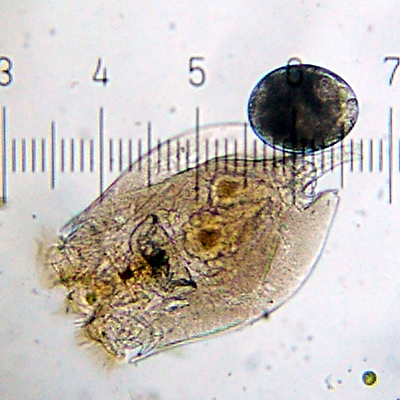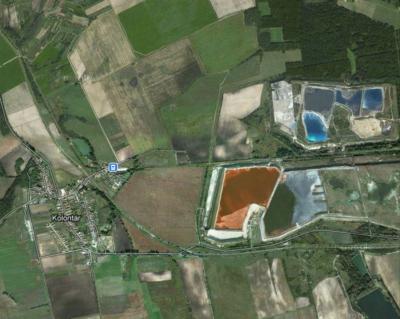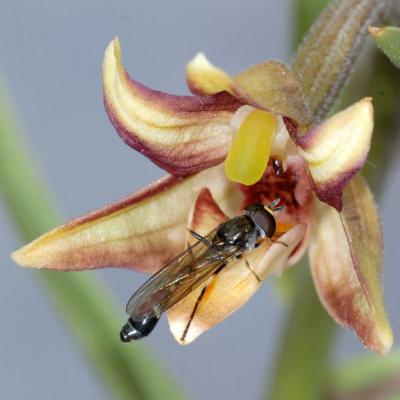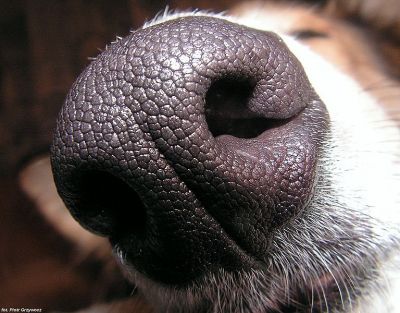
Image courtesy Wikimedia Commons.
An idiosyncratic sampling of the latest science papers. Forthwith: the complex evolution of sex; how to denature Hungary’s toxic red sludge; orchids get tricksier; dog scientists.
- Environment exerts a huge influence over whether your species has sex or not. U of Toronto evolutionary biologists found that sexual reproduction emerges more often in organisms living in heterogenous environments—places with uneven concentrations of the same species, and rich concentrations of other species—than in organisms living in more homogenous environments. The research was done with rotifers, tiny aquatic organisms capable of sexual or asexual reproduction, that were allowed to evolve in either environmentally homogeneous or heterogeneous habitats. After more than 70 generations, they tended toward sexual reproduction in heterogeneous habitats and asexual reproduction in homogeneous environments. You find the political metaphor. The paper: Higher rates of sex evolve in spatially heterogeneous environments, in Nature.
 Rotifer. Each numbered tick is 122 µM. Credit: Bob Blaylock, courtesy Wikimedia Common
Rotifer. Each numbered tick is 122 µM. Credit: Bob Blaylock, courtesy Wikimedia Common
- The bauxite residue infamously known as red sludge that escaped a containment pond in Hungary last week to kill all life in an entire river could be made less toxic with the help of carbon sequestration. That according to a geologist from Indiana University. Here’s how. Bauxite residue has a pH of between 11 and 13 (water: 7). To reduce the sludge pH, the geologist suggests mixing it with another kind of industrial waste—oil-field brine, a by-product of oil and gas production—and then carbon dioxide. The brine provides the medium for CO2 to dissolve and then, with the help of water, form carbonic acid, lowering the pH. Heavy metals in the sludge then spontaneously precipitate out of solution. So, two toxins make a right. The geologist has a patent pending on the technique.
 The bauxite residue holding pond, near Kolontar, Hungary, burst on Oct. 4, 2010, leading to human casualties and intense environmental damage. Image courtesy Google Earth
The bauxite residue holding pond, near Kolontar, Hungary, burst on Oct. 4, 2010, leading to human casualties and intense environmental damage. Image courtesy Google Earth
- Plants lie to animals. We know this. Now a new deceipt has come to light. German researchers have discovered that the orchid Epipactis veratrifolia produces chemical substances emitted by aphids as alarm pheromones. Females hoverflies smell the alarm and lay their eggs close by, thinking the “aphid colony” will be food for their hatching larvae. It’s not altogether an act of orchid piracy though. The hoverfly gets a tiny dose of nectar in return for her unwitting pollination services. The paper: Smells like aphids: orchid flowers mimic aphid alarm pheromones to attract hoverflies for pollination, in Proceedings of the Royal Society B.
 Eastern marsh helleborine (Epipactis veratrifolia), an orchid species, has successfully lured a hoverfly of the genus Ischiodon by mimicking alarm pheromones usually emitted by aphids. Credit: MPI Chemical Ecology, Johannes Stökl
Eastern marsh helleborine (Epipactis veratrifolia), an orchid species, has successfully lured a hoverfly of the genus Ischiodon by mimicking alarm pheromones usually emitted by aphids. Credit: MPI Chemical Ecology, Johannes Stökl
- The evolution of dog scientists continues. We’ve heard about the whale-poop-finding dogs. Now a group of researchers reports using scat-detection dogs to gauge the presence and abundance of five large mammals threatened with extinction by habitat loss: maned wolves, pumas, jaguars, giant anteaters, and giant armadillos. The idea was to see if any of these animals were living in agricultural areas near protected lands in the dry tropical savannas of Brazil. The dogs were trained to find the scat of various species, and were awarded PhDs in noseology. Not really. The paper: Effectiveness of scat-detection dogs in determining species presence in a tropical savanna landscape, in Conservation Biology. From the abstract:
We were able to detect the presence for each of five wide-ranging species inside and outside the park and to assign occurrence probabilities to specific survey sites. Thus, scat dogs provide an effective survey tool for rare species even when accurate detection likelihoods are required. We believe the way we used scat-detection dogs to determine the presence of species can be applied to the detection of other mammalian species in other ecosystems.
 Photo credit Piotr Grzywocz, courtesy Wikimedia Commons
Photo credit Piotr Grzywocz, courtesy Wikimedia Commons













